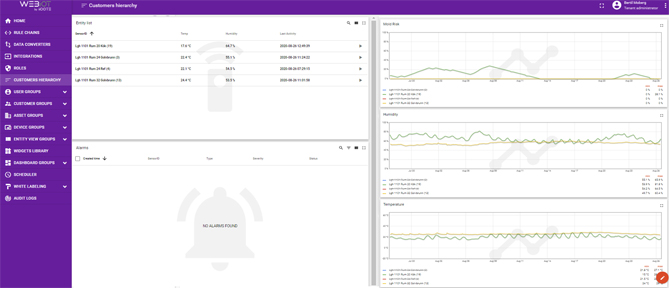Viking and Iioote use LoRa and AI to predict black mould
- October 5, 2020
- Steve Rogerson

Swedish companies Viking Analytics and Iioote are using LoRa technology and artificial intelligence (AI) to detect the early onset of black mould (stachybotrys chartarum) in buildings.
Viking provides analytics for predictive operations and the combined technology uses LoRA Alliance member Iioote’s WebIoT platform. The algorithm developed by Viking uses data collected by sensors to detect variations in temperature and humidity that indicate the risk of fungus growth, known for causing damage in construction materials such as fibre-board and drywall.
Humidity, temperature and leakage sensors are installed in places where there is a high risk of water damage, such as bathrooms, kitchens, water distribution pipes and drain systems, where they constantly register and transmit measurements. The information is then sent to a platform in which an anomaly detection algorithm constantly analyses it and detects levels that could favour the development of black mould.
The analysis is displayed in a user-friendly interface and triggers a notification when the risk level rises, so experts can decide which actions to take based on the data. SMS and email alarms can also be configured.
The anomaly detection algorithms are normally used by intensive manufacturing industries, where many sensors have been installed in machines and collected data for years. According to Stefan Lagerkvist, CEO of Viking Analytics, this offering shows that “sectors that do not rely on heavy machinery, like insurance and property management, benefit from the adoption of IoT and our data analytics. We are now taking an important step to include smart cities.”

The offering is a result of a partnership between both companies that started a year ago to address a necessity from water and sewage treatment and insurance companies for a way to detect the early onset of black mould and act on it. The use of AI saves time spent in manually going through the data and allows even professionals without a background in data science to analyse and make decisions based on them.
Robert Spertina, CEO of Iioote, explained that monitoring and being able to detect moisture before it could cause extensive damage was extremely important to construction companies, landlords, property owners and insurance companies.
“It is estimated that water damages cost more than SEK6bn every year to homeowners in Sweden, which directly affects compensation paid by insurance companies,” said Spertina. “One of our clients calculated that the avoided cost of one water leakage would pay off the investment in over 100 sensors, so it is really very cost-effective.” The sensors are wireless with several kilometres of range, battery powered with many years of operation, and can be connected to public or private LoRaWan radio network built for the IoT.





